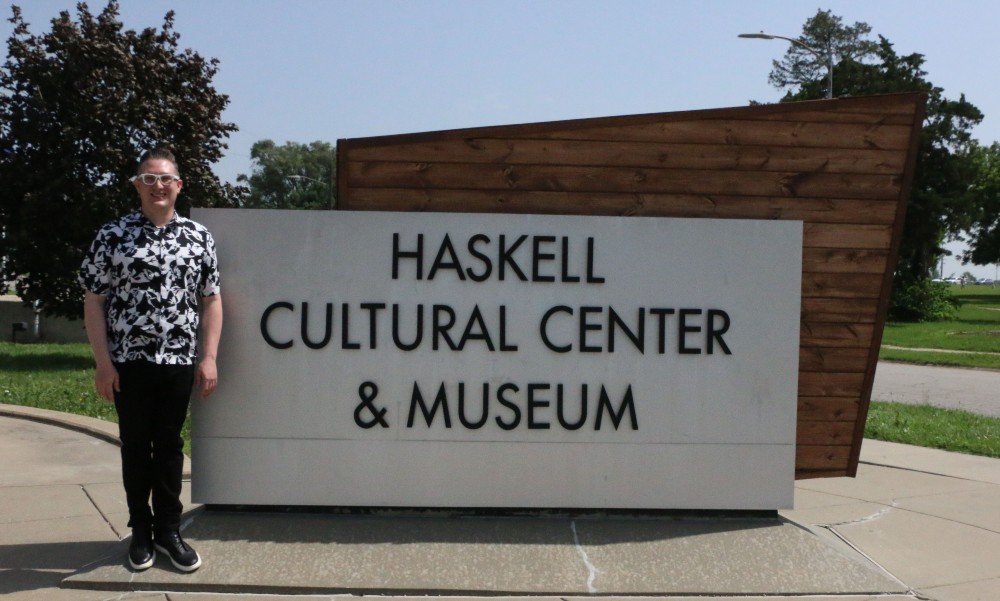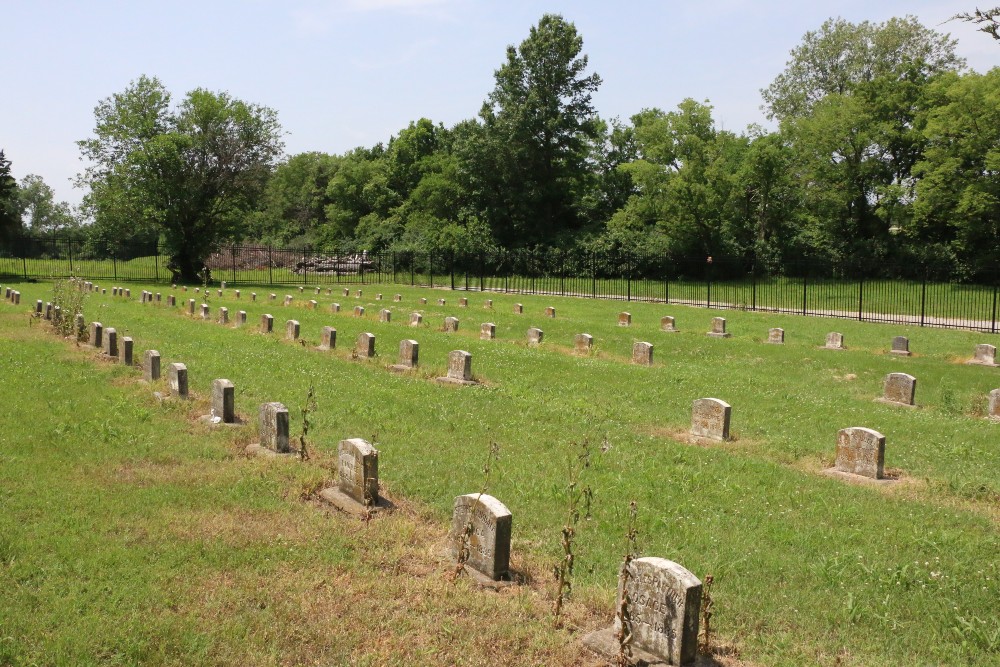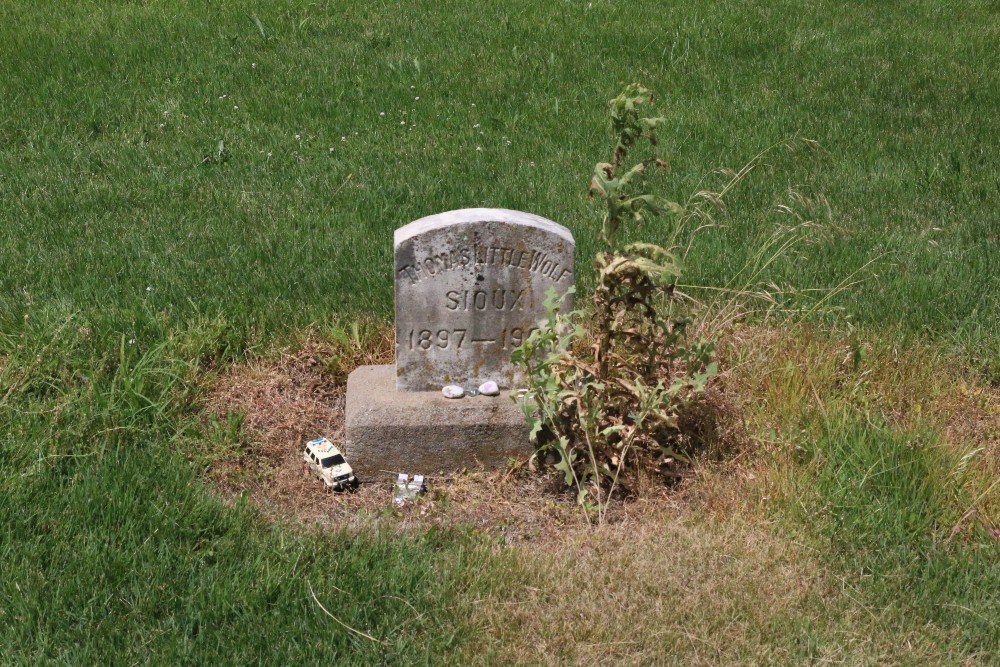
- Details
- By Alexandra Blye and Karen Middleton
Haskell Institute, founded as United States Indian Industrial Training, was an Indian boarding school in Lawrence, Kansas that was established in 1884. During the boarding school era, children were brought there by force — sometimes in child-sized handcuffs — and put into a re-education program. The legacy of the boarding school era still resonates today.
This article was produced in collaboration with the Native Storytelling Workshop at the University of Kansas.
The early years of Haskell brought death to Native children, who were taken from the Kickapoo, Cheyenne, Omaha and several other tribes. Many of these deaths were caused by poor conditions such as incomplete dorms, bad restroom facilities, and diseases spread by students sharing towels. If a student was sick, they were sometimes sent to the hospital.
Yet, food rations in the hospital were stolen by the head doctor, and being sold in nearby Lawrence. Some rations meant for the children were also being taken by the nurses.
“They were starved,” Travis Campbell, property management specialist at Haskell, told Native News Online. Campbell gives tours and shares the history of the institution. Sick students had little access to medication, because the head doctor was also stealing the medication provided by the government, and selling it in Lawrence as well, to other physicians.
“It was just deplorable,” Campbell said. Students as young as three were being ripped from their families and brought to Haskell for what was intended to be a four-year education but most times ended up being longer–some ended up staying for 10 years. Some parents of the children willingly sent their children to Haskell, while others were forced or convinced by the government to send their children to Haskell.
Native families were told that Haskell was the best opportunity for their children; other families had food rations, clothing rations, and important supplies taken away by the government until they sent their children to Haskell. Most of the time children were not allowed to leave or return home to see their family, however there are a few records of students being allowed off campus to see their family on these visits.
“So imagine your child is taken from you at the age of three. And they're allowed to come back two or three years later, and spend a week and then go back to school,” Campbell said.
There are cases of children running away from Haskell, and sometimes when they were sent to visit their family, they did not return. People would hide the children and cover for them so they would not be found. Runaways couldn’t always find help because it was illegal to harbor the runaways and not notify the boarding school or the authorities.
 A map of Haskell's grounds, showing the route children would take when they would run away. (Kristen Middleton)
A map of Haskell's grounds, showing the route children would take when they would run away. (Kristen Middleton)
Today, there is a cemetery for some of the children that died while at Haskell. The headstones are promptly faced away from the buildings, and many people have left little items at the grave sites such as children’s toys, or rocks and crystals. On the campus, there is land where some of the children would run through, attempting to escape; however many of them didn’t make it. Visiting Haskell, a visit to the cemetery feels like you are there with the children sharing that grief and really taking time to think.
 Marked graves at Haskell. (Photo/Karen Middleton)
Marked graves at Haskell. (Photo/Karen Middleton)
There is also an oral history of unmarked graves, on land that has been sold to the University of Kansas, according to Campbell.
Today, Haskell Indian Nations University is a four-year college operated by the Bureau of Indian Education.
Thinking about reconciling this dark past with the present day, Campbell says, “Through education, through saying, yes, that happened; Acknowledgement is the biggest part of that. I think, just to acknowledge that did happen here, that is, truthfully what we were established for. And how are we making that right? What we are doing now is we are educating and training people to Native people in particular, to come into the government and fill these positions so that this doesn't happen again. I think that's the biggest thing we can do is prevent anything like this from ever happening again.”
 A grave at Haskell. (Photo/Karen Middleton)
A grave at Haskell. (Photo/Karen Middleton)
Help us tell the stories that could save Native languages and food traditions
At a critical moment for Indian Country, Native News Online is embarking on our most ambitious reporting project yet: "Cultivating Culture," a three-year investigation into two forces shaping Native community survival—food sovereignty and language revitalization.
The devastating impact of COVID-19 accelerated the loss of Native elders and with them, irreplaceable cultural knowledge. Yet across tribal communities, innovative leaders are fighting back, reclaiming traditional food systems and breathing new life into Native languages. These aren't just cultural preservation efforts—they're powerful pathways to community health, healing, and resilience.
Our dedicated reporting team will spend three years documenting these stories through on-the-ground reporting in 18 tribal communities, producing over 200 in-depth stories, 18 podcast episodes, and multimedia content that amplifies Indigenous voices. We'll show policymakers, funders, and allies how cultural restoration directly impacts physical and mental wellness while celebrating successful models of sovereignty and self-determination.
This isn't corporate media parachuting into Indian Country for a quick story. This is sustained, relationship-based journalism by Native reporters who understand these communities. It's "Warrior Journalism"—fearless reporting that serves the 5.5 million readers who depend on us for news that mainstream media often ignores.
We need your help right now. While we've secured partial funding, we're still $450,000 short of our three-year budget. Our immediate goal is $25,000 this month to keep this critical work moving forward—funding reporter salaries, travel to remote communities, photography, and the deep reporting these stories deserve.
Every dollar directly supports Indigenous journalists telling Indigenous stories. Whether it's $5 or $50, your contribution ensures these vital narratives of resilience, innovation, and hope don't disappear into silence.
 The stakes couldn't be higher. Native languages are being lost at an alarming rate. Food insecurity plagues many tribal communities. But solutions are emerging, and these stories need to be told.
The stakes couldn't be higher. Native languages are being lost at an alarming rate. Food insecurity plagues many tribal communities. But solutions are emerging, and these stories need to be told.
Support independent Native journalism. Fund the stories that matter.
Levi Rickert (Potawatomi), Editor & Publisher
